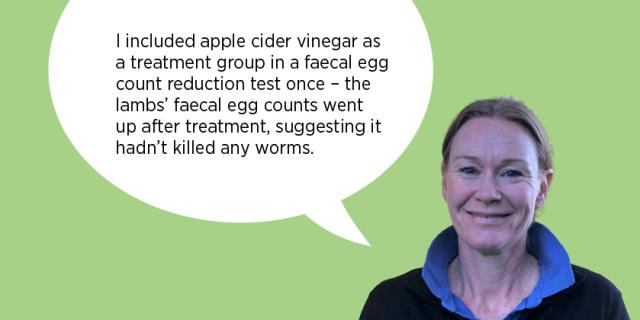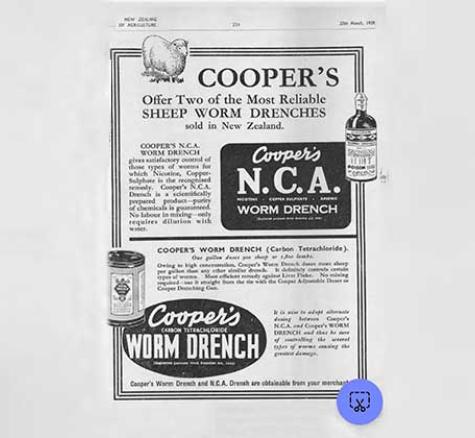A range of different ‘natural’ products, herbs and minerals are sometimes advocated as treatments or preventives for worm infections in livestock. This page is by no means a complete list. But here we review some commonly mentioned ones, and available evidence for their efficacy.
Apple cider vinegar
Cider vinegar is claimed by some to have various stock animal health benefits, including parasite control.
Research into it’s efficacy has been limited.

Copper oxide wire particles
Prior to the advent of safe, broad spectrum worm drenches, copper was a component of some mixtures given to stock for worm treatment. An example was the sometimes-toxic ‘NCA’ (Nicotine Copper & Arsenic).
- Copper oxide wire particles (COWPs) can be administered to stock as copper boluses.
- Copper boluses have a capsule which breaks down in the abomasum, releasing the COWPs, which lodge in the folds of the abomasum and dissolve slowly over time.
Research into COWPs:
- Studies have been done in sheep and goats
- Copper oxide wire particles can reduce faecal egg counts
- Copper oxide wire particles can reduce the establishment of worm species that live in the abomasum: Barber’s Pole worm (Haemonchus) and Teladorsagia.
- Copper oxide wire particles did not reduce the establishment of Trichostrongylus, which lives in the small intestine.
Excess copper can cause copper poisoning in any species. Care is required with sheep in particular. Seek advice from your veterinarian. Checking liver copper levels is recommended before embarking on a programme of copper treatment in sheep.
Earthworms and dung beetles
While both earthworms and dung beetles can ingest and remove internal parasite eggs and larvae from pasture, there is no evidence that under New Zealand pasture conditions they can remove enough numbers for us to alter the other things we do to control internal parasites.
In fact, work by AgResearch has shown that adding dung beetles to pasture actually increases the number of parasite larvae present in the pasture, presumably via their action of breaking up dung pats.
Nematophagus fungi
Nematophagus fungi are able to reduce development of larvae in dung pats and inhibit their movement.
Pats and inhibit their movement. The fungi trap the larvae, somewhat like a fly in a spider web.
One that has undergone commercial development is Duddingtonia flagrans. This
Is commercially available as BioWorma®.
Bioworma needs to be fed continually and has a high cost per animal. Its application is probably limited to horses and lifestyle blocks.
More reading
- A list of various papers on alternative options for worm control can be found at the American Consortium for Small Ruminant Parasite Control.
- A good local review is provided on Deer Industry New Zealand’s Deer Hub website (pages 63–74).
